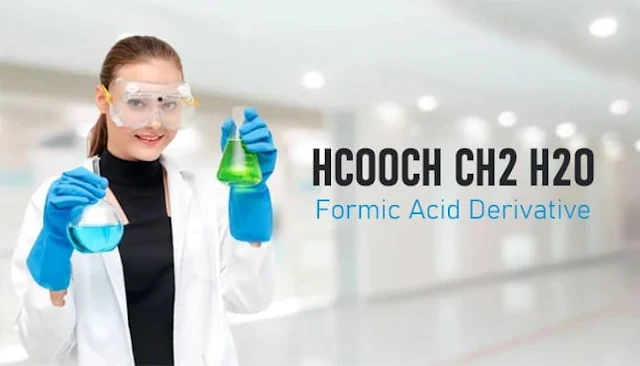Title: A Comprehensive Guide to the Reaction of HCOOH, CH₂, and H₂O: Chemistry, Mechanisms, and Applications

Introduction
Chemical reactions involving small organic molecules play a fundamental role in numerous fields of science and technology. Among these, the interaction of formic acid (HCOOH), methylene (CH₂), and water (H₂O) is particularly interesting due to its relevance in organic synthesis, environmental chemistry, and biological systems. These three simple molecules represent distinct chemical families—carboxylic acids, carbenes, and solvents—and when they interact, the reactions are often complex, insightful, and valuable for both theoretical understanding and practical application.
In this article, we explore in detail the chemical behavior of HCOOH, CH₂, and H₂O, examining their individual characteristics, potential reactions, mechanistic pathways, and real-world applications. Whether you’re a student, a researcher, or a chemistry enthusiast, this guide will give you a thorough understanding of these molecular interactions.
Section 1: Overview of the Molecules
1.1 Formic Acid (HCOOH)
Formic acid, the simplest carboxylic acid, is a colorless liquid with a pungent odor. It occurs naturally in the venom of ants (hence its name from the Latin formica, meaning ant).
Chemical structure: H–C(=O)–OH
Molecular weight: 46.03 g/mol
Boiling point: 100.8 °C
Properties:
- Weak acid (pKa ≈ 3.75)
- Capable of hydrogen bonding
- Acts as a reducing agent
- Used in leather processing, textile dyeing, and as a preservative
1.2 Methylene (CH₂)
Methylene, in its singlet or triplet form, is a highly reactive species known as a carbene. Carbenes are neutral molecules with a divalent carbon atom and two non-bonded electrons.
Types of methylene:
- Singlet CH₂: Paired electrons, more reactive in polar reactions
- Triplet CH₂: Unpaired electrons, behaves like a diradical
Generated via:
- Photolysis of diazomethane
- Thermolysis of ketene derivatives
- Organic decomposition reactions
Due to its high reactivity, CH₂ is usually transient and reacts quickly with other molecules, including formic acid and water.
1.3 Water (H₂O)
Water is the universal solvent, critical in countless chemical and biological reactions.
Properties:
- Polar molecule with hydrogen bonding capabilities
- Stabilizes ions and intermediates
- Participates in hydrolysis, hydration, and proton transfer reactions
In this triad, water often acts as a solvent or proton donor/acceptor.
Section 2: Possible Reactions Between HCOOH, CH₂, and H₂O
2.1 CH₂ Insertion into HCOOH
One of the most important reactions involving CH₂ and HCOOH is the insertion of CH₂ into the O–H or C–H bonds of formic acid.
Mechanism:
- CH₂ (carbene) approaches the –OH group of HCOOH.
- It can insert into the O–H bond to form hydroxymethylformate (HOCH₂COOH).
- Alternatively, insertion into the C–H bond forms methylenediformic acid (CH₂(HCOO)OH) (less common).
Equation:
CH₂ + HCOOH → HOCH₂COOH
This reaction produces a hydroxymethyl derivative that can further undergo dehydration or esterification.
2.2 Hydrolysis and Water-Assisted Reactions
In the presence of water, the reaction environment changes significantly. Water can:
- Stabilize transition states
- Hydrolyze esters formed during reactions
- Facilitate proton transfer reactions
If hydroxymethylformate is formed, it may further hydrolyze in aqueous conditions:
HOCH₂COOH + H₂O → HCOOH + HOCH₂OH (formic acid + methanol)
This reversible reaction is part of dynamic equilibrium in aqueous systems.
2.3 Formation of Polymeric Structures
Under certain conditions, the methylene group may react multiple times, inserting into several molecules of formic acid or water. This could potentially lead to:
- Oligomeric polyhydroxy acids
- Polyformate esters
- CH₂-bridged dimers
Such structures are more theoretical but are important in prebiotic chemistry and polymer research.
Section 3: Experimental Considerations
3.1 Generation of Methylene
Methylene is not stable under normal conditions and is typically generated in situ using:
- Photolysis of diazomethane
- Thermal decomposition of ketene
- Reaction of methylene iodide with zinc (Simmons–Smith reaction)
Due to its reactivity, all experiments must be conducted under controlled conditions, often in inert atmospheres (argon or nitrogen).
3.2 Reaction Setup with Formic Acid and Water
- Solvent: Reactions are often carried out in water or mixed solvents (e.g., THF/H₂O).
- pH control: Necessary to prevent degradation of reactive intermediates.
- Temperature: Usually conducted at room temperature or under reflux for enhanced kinetics.
Section 4: Applications of the Reaction
4.1 Organic Synthesis
Reactions involving CH₂ and HCOOH are important in:
- Synthesis of hydroxy acids
- Precursor formation for biodegradable plastics
- Design of greener reaction pathways using formic acid as a carbon source
Hydroxymethyl derivatives formed can be used to synthesize:
- Polymers
- Resins
- Plasticizers
4.2 Prebiotic Chemistry
In the study of the origin of life, reactions of CH₂ with formic acid and water simulate potential primitive Earth conditions, where:
- CH₂ may form from UV photolysis of simple carbon compounds
- Formic acid and water would be abundant in early Earth or comets
- Formation of hydroxy acids may be precursors to amino acids and proteins
4.3 Environmental Chemistry
Formic acid is an important organic pollutant and degradation product in the environment. Understanding how CH₂ interacts with HCOOH and H₂O can help:
- Model atmospheric reactions
- Improve catalytic degradation pathways
- Design better water purification systems
Section 5: Theoretical Insights
5.1 Computational Chemistry
Quantum chemical calculations (e.g., DFT) are used to:
- Predict the most stable conformers of CH₂-inserted products
- Analyze reaction energy profiles
- Simulate transition states of CH₂ insertion reactions
These insights help chemists design better catalysts and understand selectivity in organic reactions.
5.2 Kinetics and Thermodynamics
- Activation energy: Methylene insertions are fast but require precise alignment
- Thermodynamics: The formation of hydroxymethylformate is generally exergonic
- Equilibrium constants: Depend on solvent polarity and temperature
Section 6: Safety and Handling
- Formic acid: Corrosive; causes burns; handle with gloves and eye protection.
- CH₂ (carbene): Highly reactive; should only be handled under supervision in well-equipped labs.
- Water: Safe but critical in modulating reaction pathways.
Always consult Material Safety Data Sheets (MSDS) before performing chemical experiments.
Conclusion
The interaction between HCOOH (formic acid), CH₂ (methylene), and H₂O (water) is a fascinating domain in organic chemistry, offering insight into reactivity, selectivity, and mechanisms of fundamental chemical transformations. Whether you are studying environmental systems, exploring the origins of life, or designing synthetic pathways for green chemistry, these molecules offer a powerful combination for exploration.
Understanding the nuances of how CH₂ inserts into HCOOH and how water modulates the reaction gives scientists tools for innovation across chemistry, biology, and material science. With ongoing research in carbene chemistry and green solvents, the future of such molecular interactions continues to unfold with promise and potential.
References
- March’s Advanced Organic Chemistry – Michael B. Smith
- Modern Physical Organic Chemistry – Eric V. Anslyn, Dennis A. Dougherty
- “Carbene Insertion Reactions” – Accounts of Chemical Research
- National Center for Biotechnology Information – PubChem Database (HCOOH, CH₂, H₂O)
- IUPAC Compendium of Chemical Terminology
